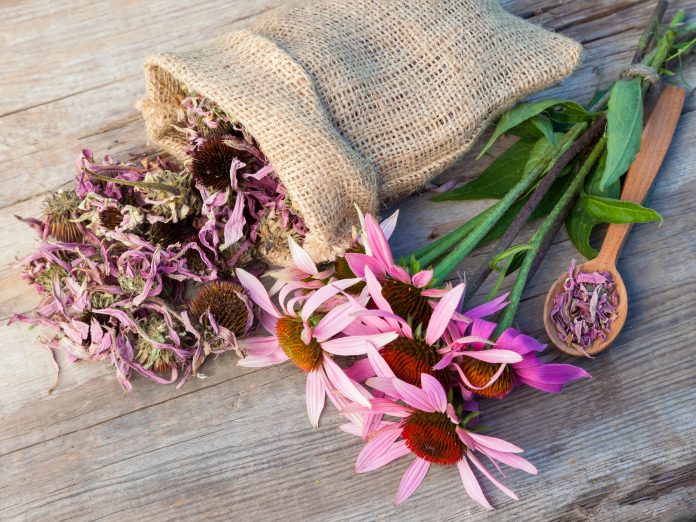
Discover echinacea benefits for the skin and body! Echinacea is a popular, perennial, herb native to North America. Echinacea has tall stems with purple or pink flowers and a central cone, resembling a spiked comb. The cone is the seed head with sharp, prickly, spines. It’s alternative name is purple coneflower. This herb has been used throughout history for many ailments.
Echinacea
There are identified plant species, but only three are commonly used clinically: Echinacea angustifolia, Echinacea pallida and Echinacea purpurea. Medicine consists of its leaves, root and blossom. Chemicals from the origin differ from those in the top plant. The roots have elevated concentrations of volatile oils. The above-ground plant parts contain polysaccharides, substances that activate the immune system. Research indicate the above ground component of Echinacea purpurea is the most medicinally effective.
Echinacea Benefits
Echinacea is available in various forms: dried herb, liquid extracts, tablets, capsules, juice, tea, ointments and lotions. It may be combined with other herbs. It can be obtained at most pharmacy, grocery or natural health food stores.
Its preference varies based on mixtures. It can leave an unpleasant after taste of licorice and alcohol. Try juicing a 1 ounce size of echinacea alone or mix it with other produce, for bigger sized drinks. Combat colds, coughs and upper respiratory infections with a mix of ginger, echinacea and lemon in a home made tea recipe!
Echinacea tincture is a super concentrated herbal medicine. It’s usually made in an alcohol base. Apple cider vinegar or glycerin can be substituted for the alcohol. Homemade echinacea tincture is handy to have around the home for prolonged illnesses.
Body
- Treat colds, flu, sore throat, enlarged lymph nodes, coughs, bronchitis; upper respiratory infections.
- Antiviral.
- Stimulate immune system.
Skin
- Heal burns, UV radiation damage.
- Antibiotic.
- Increase elasticity.
- Heal minor skin wounds and infections.
- Prevent breakdown of hyaluronan, a part of cartilage and synovial fluid. (Hyaluronan is called the”goo molecule”).
- Soothe bee stings.
- Treat abscesses, ulcers and boils.
- Improve hydration.
- Treat acne, eczema and psoriasis.
- Reduce inflammation.
When to avoid Echinacea
- Have tuberculosis, leukemia, diabetes, connective tissue disorder, multiple sclerosis, HIV, Aids, autoimmune disease, liver disease.
- Allergic to ragweed, marigolds, daisies, chrysanthemums or some other plants in the Asteraceae household.
- On immunosuppressant medication.





